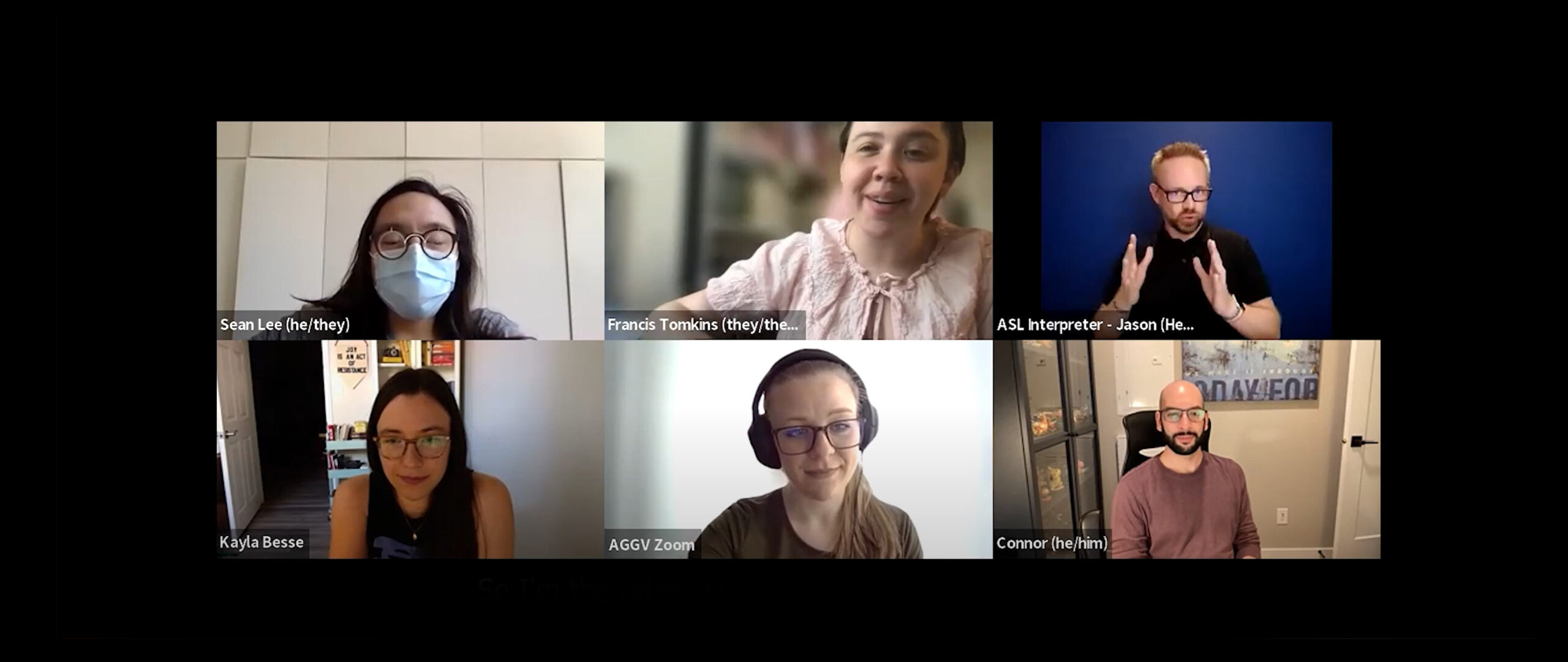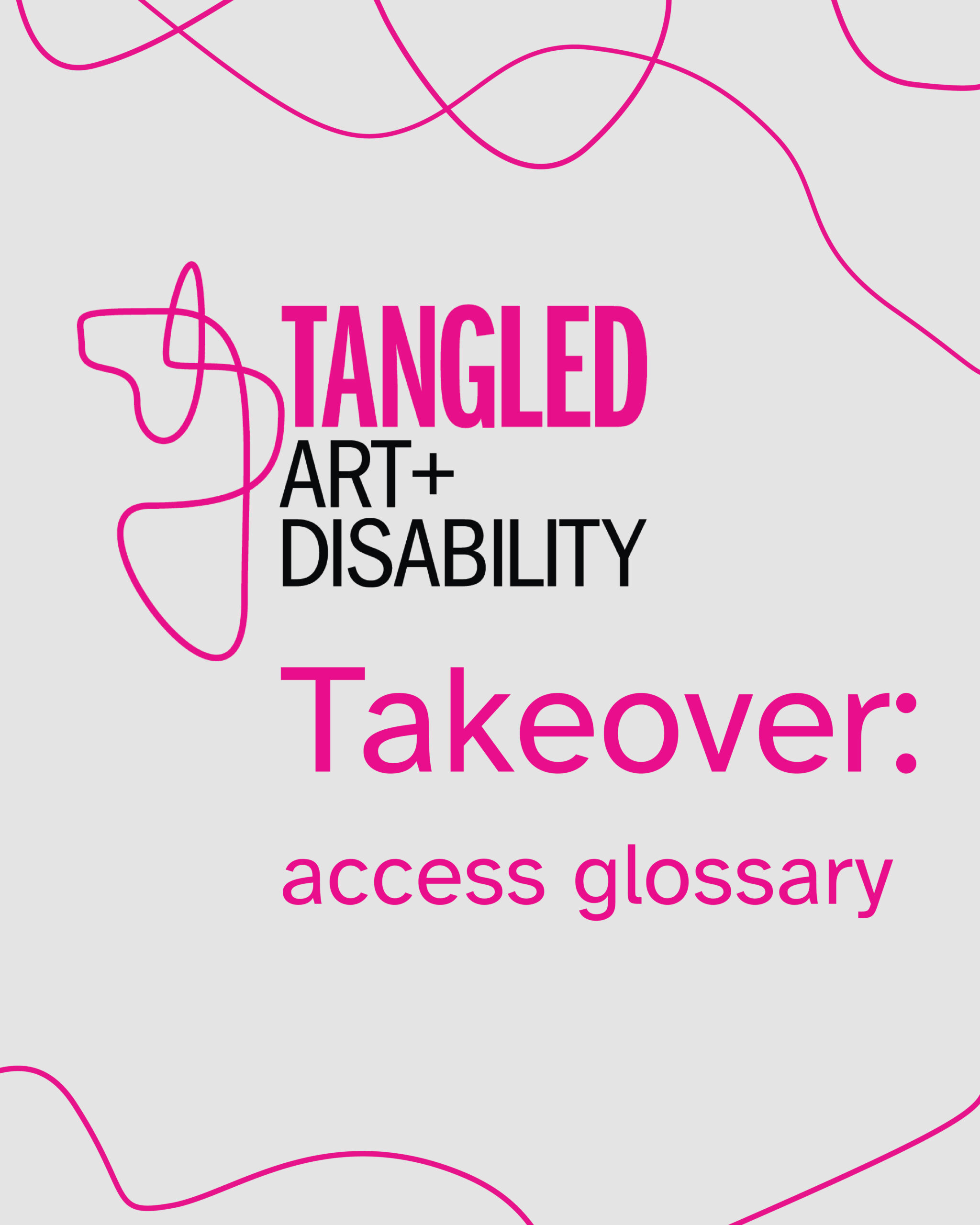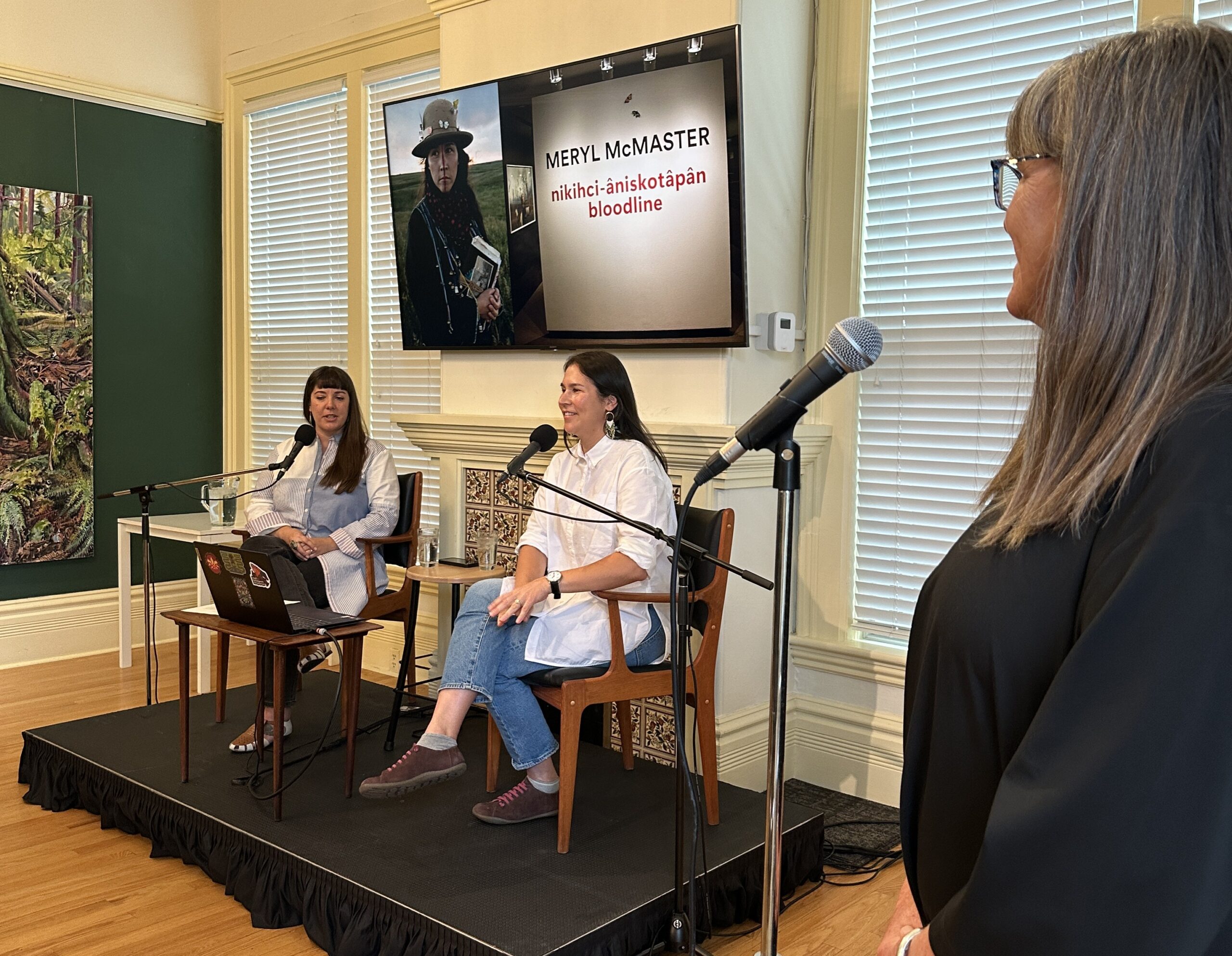By Tangled Art + Disability
This past Disability Pride Month, Tangled Art + Disability and AGGV collaborated on an accessibility audit of the AGGV’s digital offerings. This sparked some great conversations about Disability Arts and accessibility, leading us to think about some of the terms we use often in disability culture. Keep scrolling to read our glossary of Disability Arts terms, or check out the AGGV’s #WIP Podcast to learn more about the audit.

Ableism: As defined by TL Lewis: “A system that places value on people’s bodies and minds based on societally constructed ideas of normalcy, intelligence, excellence and productivity. These constructed ideas are deeply rooted in anti-Blackness, eugenics, colonialism, and capitalism. This form of systemic oppression leads to people and society determining who is valuable and worthy based on a person’s appearance and/or their ability to satisfactorily [re]produce, excel and ‘behave.’ You do not have to be disabled to experience ableism.”
Access Need: An access need is something that is needed for a person to be able to take part in something in a variety of ways. Everyone has access needs, whether they are disabled or not. Access needs are unique to each person. Examples of access needs range from needing large-print text, ASL, or captions, to using a ramp to get into a building or a lift to get into bed. When someone can’t get their access needs met, we call this an access barrier.
Crip: A term used historically to stigmatize and oppress disabled people that has been reclaimed by some disabled people. It should only be used with permission from the community or person who is being referred to. While ‘crip’ is reclaimed by some disabled folks as a personal and/or political identity, ‘to crip,’ as a verb, is “to open with desire for the ways that disability disrupts” (Kelly Fritsch), to infuse a situation with the presence of disability and access. There is discussion about whether crip refers only to the physical disability community, or other experiences as well.
Access Intimacy: As defined by Mia Mingus: “That elusive, hard to describe feeling when someone else “gets” your access needs. The kind of eerie comfort that your disabled self feels with someone on a purely access level … Access intimacy is also the intimacy I feel with many other disabled and sick people who have an automatic understanding of access needs out of our shared similar lived experience of the many different ways ableism manifests in our lives.”
Disability Art: Although there is no single definition that captures Disability Arts, it is generally agreed that disability arts is a specific arts practice which involves disability artists creating work that expresses their identity as disabled people (which isn’t necessarily the same as art ‘about’ disability). Disability Arts carry an additional dimension of meaning: that as disability arts practitioners move their work forward – individually and collectively – they are contributing to the expression of a distinct “disability culture” with unique experiences and perspectives, and shared values. Disability Art is made by disabled people.
Creative Access: Coined by Amanda Cachia, creative access turns the field of access into a site of generative art meaning-making by integrating it directly into the experience of the artwork itself – often with the artist and curator collaborating together on its implementation. This simultaneously creates a richer field of access, pushing beyond check-list methods, while also aligning access within the curatorial and artistic roles of an exhibition. While creative access is an exciting field, it should not water down the significance of providing conventional access, but rather highlight how accessibility can be practical and creative at once.
Relaxed Performance: A mode of performance that prioritizes the needs of disabled people. Initially conceptualized by and for autistic theatre audiences, relaxed performance has expanded beyond the theatre to gallery spaces, other arts venues, and even as an attitudinal practice for workplaces and gatherings. Relaxed performance might include physical changes to performance such as modified lighting and sound, and the ability for audience members to tend to their needs, to vocalize, to leave and return, to eat, etc.
Disability Justice: Developed in large part by Sins Invalid, Disability Justice centres the needs and interests of multiply-marginalized disabled people, namely queer POC. Disability Justice understands ableism as it intersects with other systems of oppression, such as racism, homophobia, and colonization. See Sins Invalid’s 10 Principles of Disability Justice, which champions the leadership of those most impacted.
Tangled Art + Disability is a non-profit art gallery in Toronto, Ontario. Our mission is to support Disabled, d/Deaf, chronically ill, neurodiverse, k/crip, Mad, sick & spoonie artists; to cultivate Disability Arts in Canada; and to increase opportunities for everyone to participate in the arts.



